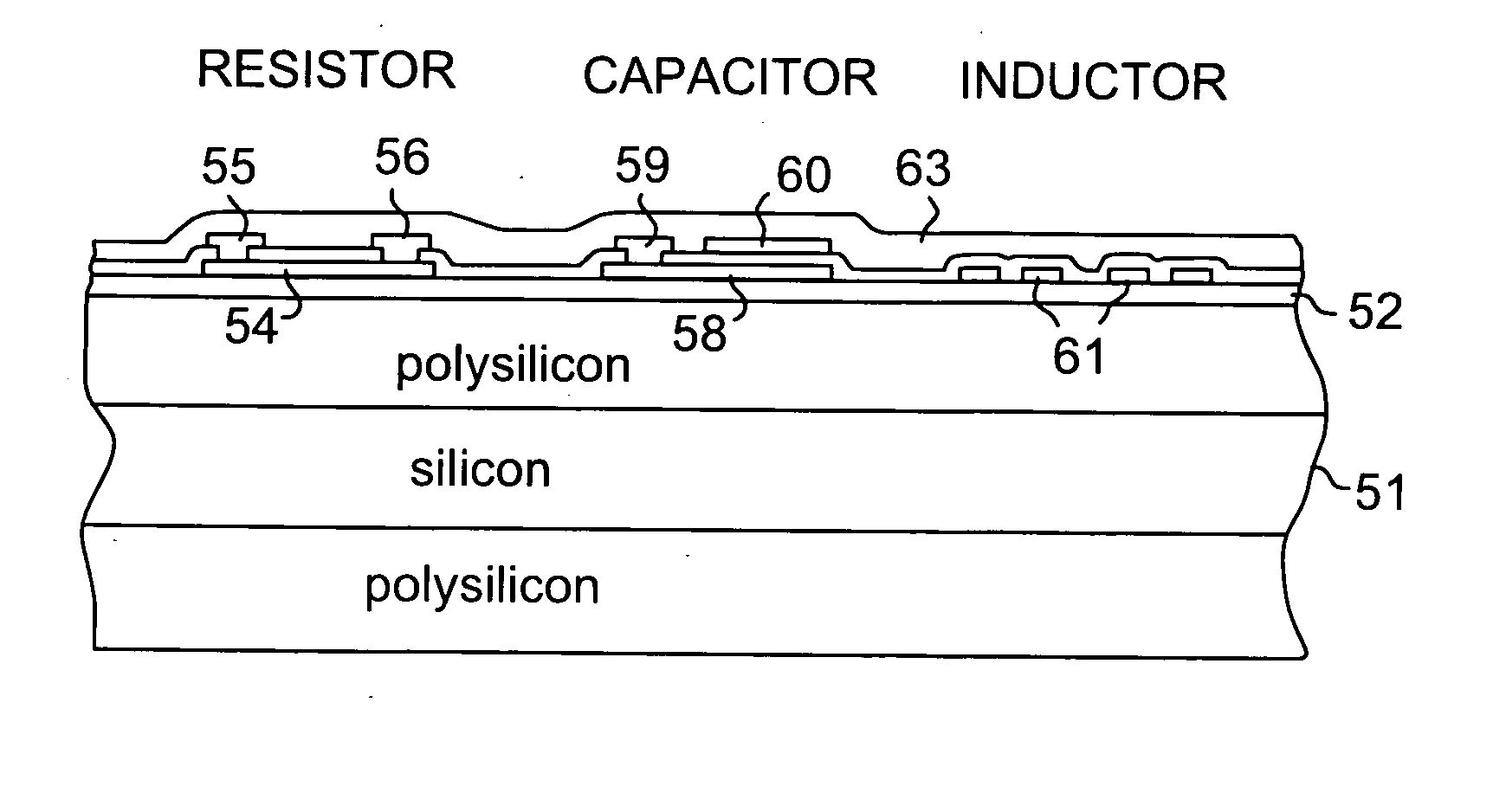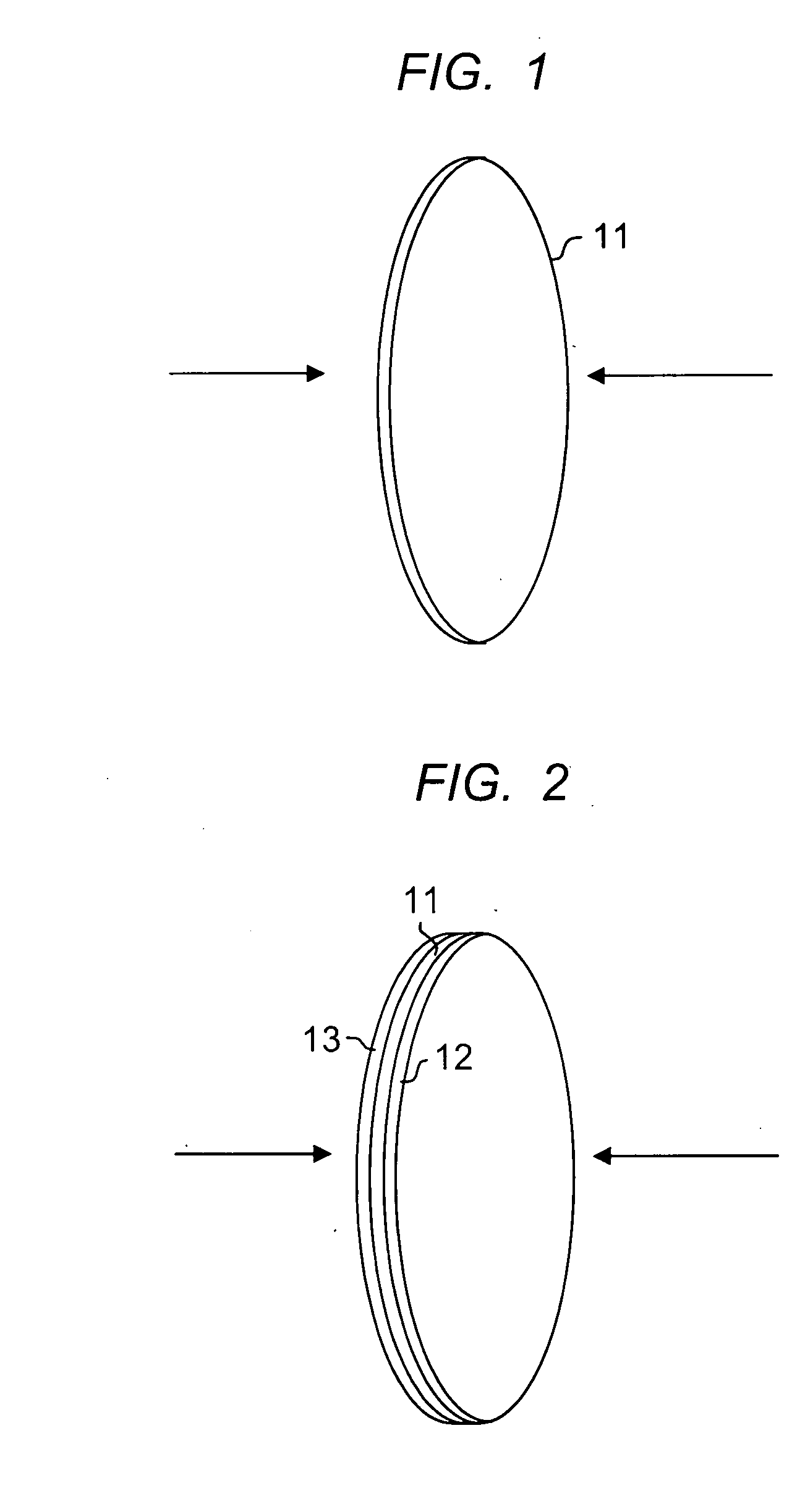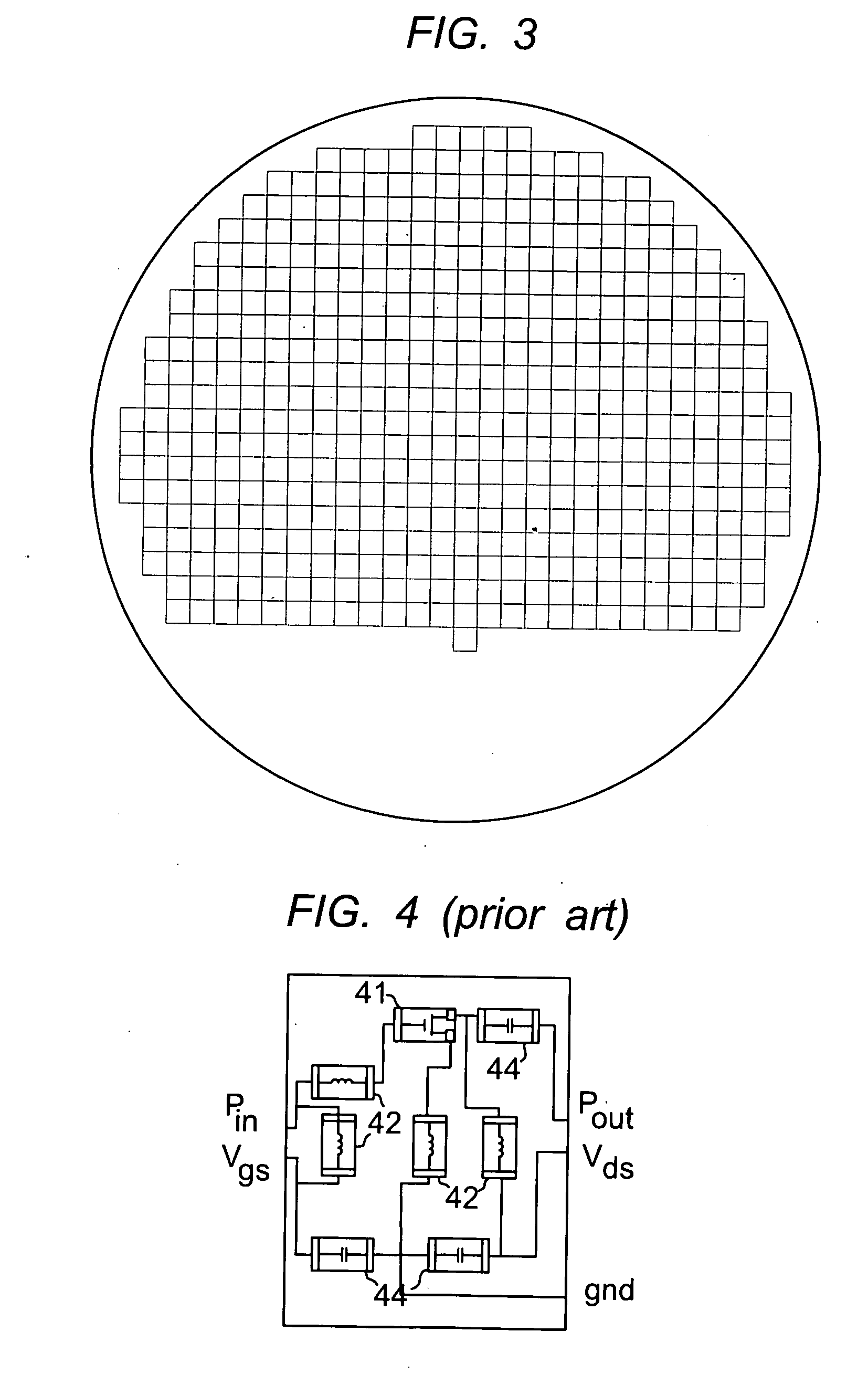Integrated passive devices
- Summary
- Abstract
- Description
- Claims
- Application Information
AI Technical Summary
Benefits of technology
Problems solved by technology
Method used
Image
Examples
Embodiment Construction
[0023] The first part of the detailed description below deals with the preferred substrate for the IPD MCM.
[0024]FIG. 1 is a view of a starting wafer 11. This is a single crystal silicon wafer cut from a boule, and is of a type of wafer used in enormous volume for IC device fabrication worldwide. Silicon wafers are produced in many sizes, but typically the larger the diameter of the wafer, the lower the potential device cost. Currently, silicon wafers are available in diameters up to twelve inches. With twelve inch wafers state of the art, that size will be used as the example in the following description, it being understood that smaller wafers, for example 6″ or 8″, are also useful.
[0025] In a wafer production facility, after sawing and polishing the wafers, each wafer is subjected to quality control, where the wafer is measured for conformity to rigid standards for physical size and electrical properties. Typically wafers with chips or scratches will be rejected. Wafers that ha...
PUM
 Login to View More
Login to View More Abstract
Description
Claims
Application Information
 Login to View More
Login to View More - R&D
- Intellectual Property
- Life Sciences
- Materials
- Tech Scout
- Unparalleled Data Quality
- Higher Quality Content
- 60% Fewer Hallucinations
Browse by: Latest US Patents, China's latest patents, Technical Efficacy Thesaurus, Application Domain, Technology Topic, Popular Technical Reports.
© 2025 PatSnap. All rights reserved.Legal|Privacy policy|Modern Slavery Act Transparency Statement|Sitemap|About US| Contact US: help@patsnap.com



